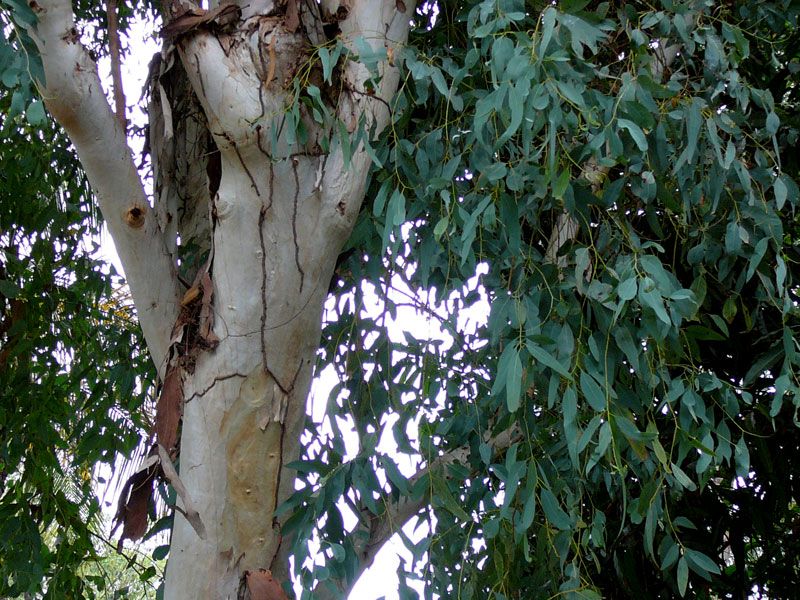Red River Gum (Eucalyptus camaldulensis)
The Red River Gum is an immense evergreen tree 18 to 40 metres tall with a spreading crown. The bark is smooth, mottled, white or grey, often tinged in red in colder areas. The leaves are a pale, dull green. Cream flowers appear from September to January and produce brown to reddish brown fruit capsules.
